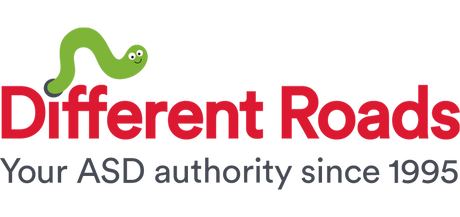As a BCBA, I am often asked to address problematic behaviors. One of the most common errors I see in addressing such behaviors is that the adults working with child have not identified the function (or purpose) of the problematic behavior. Decades of research have shown that there are only four functions for any behavior: attention, escape/avoidance, access to a tangible, and automatic reinforcement (or something that just feels good internally, but cannot be observed by outsiders).
The function of the behavior is whatever happens immediately after the behavior, and increases the likelihood that the behavior will occur again in the future. Here are a few examples of the functions, based on the same behavior:
- The therapist tells Lisa it’s time to practice tying shoes. Lisa starts biting her own hand. The therapist look shocked and calls in Lisa’s mother, who rubs her back lightly while Lisa ties her shoes then gives her a lot of verbal praise. This is likely an example of a behavior that functions for attention, because the mother comes in and provides both verbal and physical attention while she ties her shoes. Or it could be an example of a behavior that functions for escape or avoidance, since Lisa did not have to tie her shoes immediately once she began biting her hand.
- The therapist tells Lisa it’s time to practice tying shoes. Lisa starts biting her own hand. The therapist gently pushes Lisa’s hand down and then introduces a new task. This is an example of a behavior that functions as escape because Lisa does not have to tie her shoes once she begins biting her hand.
- The therapist tells Lisa it’s time to practice tying shoes. Lisa starts biting her own hand. The therapist says, “Oh, don’t stress, we’ll take a sensory break,” and gives Lisa a ball to squeeze. This is an example of a behavior maintained by tangible reinforcement. When Lisa began biting her hand she was immediately given access to a preferred item.
You’ll notice that I left out the automatic reinforcement. This is intentional because often, with a diagnosis of Autism Spectrum Disorder, people assume that a behavior is automatically reinforced instead of exploring these three potential functions described above. One way to recognize if a behavior is automatically reinforced is to note if the behavior happens when the child is alone and/or when no demands have been placed on the child. If it’s only happening around other people or when demands are placed, then it is highly unlikely that the behavior is automatically reinforced. For now, we’ll save automatic reinforcement for another blog post.
Identifying which of these functions is maintaining a problem behavior is essential to putting in an effective intervention. But how do you go about doing this?
The first thing you should do is assess! You can do an informal assessment, such as using the Functional Assessment Screening Tool (FAST) which is comprised of 16 questions that can help you quickly determine the function. If this does not provide conclusive results, you can have a BCBA do a formal functional assessment. Once you have identified the function of the behavior, you can change the environment so that not only does the child no longer receive that reinforcement for a problematic behavior, but there are appropriate replacement behaviors they can engage in to access that reinforcement. For more on that, you can look back at the Importance of Replacement Behaviors.
It may be difficult at first to think in terms of “function of behavior,” rather than assigning a reason for the behavior that is based on the child’s diagnosis or based on something happening internally inside the child’s brain that we can’t see (such as, “she’s just frustrated so she’s biting her hand,” or “she doesn’t know how to control herself”). However, once you try it out and experience some success with addressing the true function of behavior, you’ll likely see the beauty of a simple explanation for why we behave.
About the Author
Sam Blanco, PhD, LBA, BCBA is an ABA provider for students ages 3-15 in NYC. Working in education for sixteen years with students with Autism Spectrum Disorders and other developmental delays, Sam utilizes strategies for achieving a multitude of academic, behavior, and social goals. She is also an assistant professor in the ABA program at The Sage Colleges, and she is the Senior Clinical Strategist at Chorus Software Solutions

